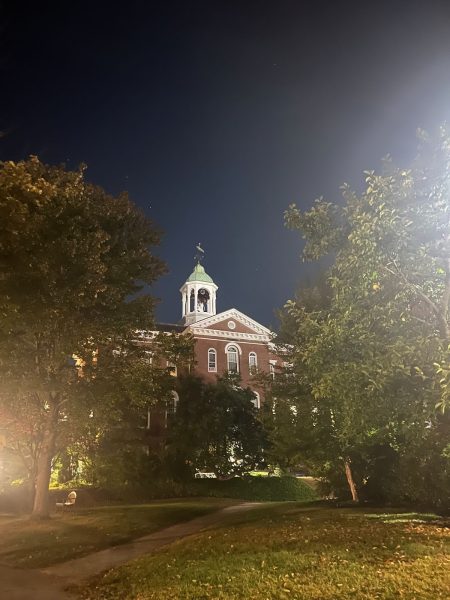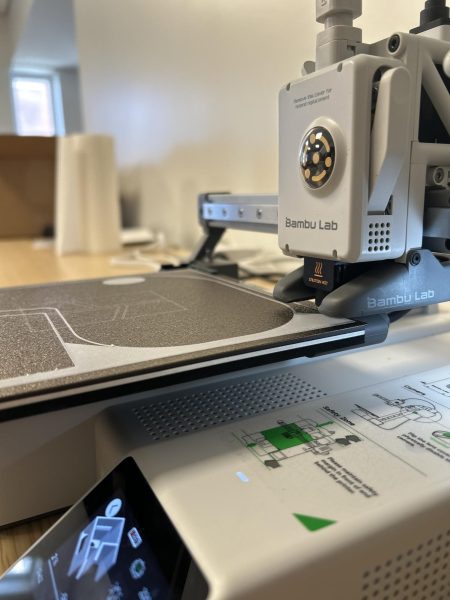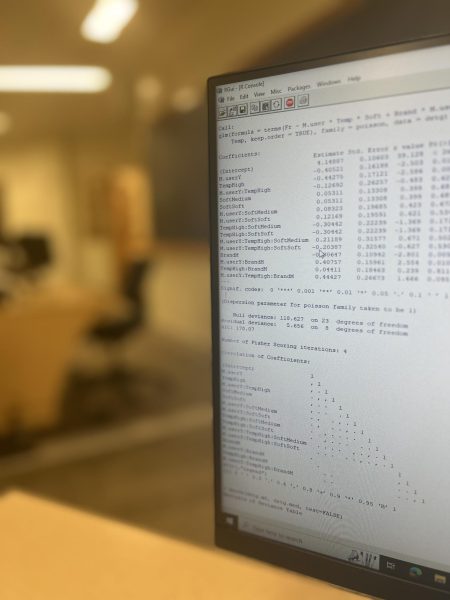Shots Fired at Colby College Party, Nobody Injured
With the two incidents of physical assault on the Bates campus, bomb threats at Tufts University and most recently shots fired at Colby College, safety on campuses is at the forefront of student concern across the East Coast.
Early Saturday morning on March 11, shots were fired on Colby’s campus in a student residence known as the “Senior Apartments.” No one was harmed as the shots hit hallway walls, and the 24 year-old shooter, Andrew Gifford, was taken into custody.
According to a source, Gifford, a Waterville local and non-student, was “invited to sell cocaine” by a Colby College student. It is common for Thomas College students to attend Colby parties, so it is likely that Gifford’s presence did not arouse suspicion.
The shots were fired during a party that took place during Colby’s annual event “Doghead,” which is a combination of school sanctioned events including an a cappella riff-off that culminates in students gathering on the Miller Library steps to watch the sunrise after an evening of festivities. Normally coinciding with St. Patrick’s Day, Doghead was celebrated early this year due to the holiday’s overlap with the college’s spring break.
According to The Portland Herald who obtained the police affidavit of the incident, the shots were the result of an argument between Gifford and two other men. One of the men had fought Gifford previously, and had allegedly dated Gifford’s foster sister about five years ago. In the argument, Gifford was hit over the head with an alcohol bottle causing a gash.
“At first we thought someone got shot because someone said they saw blood from the man getting hit over the head,” said one Colby student, who witnessed the aftermath.
Another Colby student described their experience to The Student, saying that they “were definitely scared at first.” Though the individual was across campus, they described turning off the music, the lights and shutting the windows after hearing the news from peers.
“We stayed there for a few hours and we put a dresser against the door,” the student detailed. “We didn’t know if someone was still at large.”
Rumors of the shots spread quickly. “Around 1:30 a.m. we heard from peers not to come to the apartments, but that security was there,” said a Colby student. “We didn’t get an email until 2:15,” they continued, also adding that the school’s safety network software was not activated.
The email sent by Interim Dean of the College Barbara Moore confirmed that the Waterville Police had taken the person who fired the gun into custody, and that “no one was injured by the discharge of the gun.” The initial email also urged students “to “shelter in place until [the school has] additional information that the campus is entirely safe.”
“The emails just said to shelter in place, and we never received an email that said we could leave,” said one Colby student who was dissatisfied with the lack of details on protocol. “It was a little frustrating to not know what was going on, and to only hear details from friends.”
Bates student Nicole Smith ’23, who was present at the Colby party an hour before the fight broke out, said that the students she was with “weren’t sure if Colby was going to respond in a productive way.”
Later that day, Colby College President David A. Greene sent out an email outlining the situation as well as detailing the steps taken by the school to diffuse the situation. Similar to Clayton Spencer’s response to the two incidents of assault at Bates this fall, Greene stated that the college “will undertake a comprehensive review of the [its] response to this incident.”
Greene continued: “A detailed review of every step taken will allow us to document what we need to do to strengthen our protocols going forward, including our communications platforms and information flow. It is essential that we undertake this work with a fully honest critique and commitment to continuous improvement.”
In addition to reviewing security protocols and the college’s response, Greene said that the college would provide resources and contacts for “students who might need any kind of support, whether academic, personal, or both.”
One Colby student stated that they were appreciative of the academic and personal resources, saying, “I think the reality of it is that the people not on the scene were not as worried pretty quickly. I didn’t feel like I was traumatized so I didn’t need to take advantage of those resources, but I was definitely glad they were there.”
The student added that though the college offered emotional support options, they did not cancel Monday classes. This was met with frustration from some members of the student body. Many professors prefaced class with a discussion space for students to share reflections on the incident.
Colby’s response was met with some criticism that Monday, during an official conversation between students and deans where students could voice their opinions on the school’s response.
“I don’t think the criticism went over very well. They kind of deflected and said that they would check that the student response system was working,” said a Colby student, referring to the a system that was not activated the night of the shots fired.
However, these are all short term solutions for alleviating the impact of the shots fired. Nicole Smith, the Bates senior who was at the party, outlined one possible long term solution, describing how easy it is for strangers to enter the Senior Apartments. Smith said that only residents of the dorms have keycard access, so at parties, oftentimes large groups of people will be let in at a time.
“Allowing more students to have access to the dorm could prevent letting in big groups of people,” Smith said. “The biggest issue is to figure out ways to prevent this from happening in the future.”
“It is scary to think that there are issues of guns at any school, but especially one so close and so similar to Bates,” said Sarah Lieber ’26. Despite the open campus layout, it is common for students to feel the effect of the Bates “bubble.” Incidents like this, as well as the assaults from the beginning of the school year, have left many students feeling unsettled.
Though schools can never fully expect these kinds of dangerous situations, they can still prepare using the resources and past experiences at hand, aided by student input. As a student and first year, I want to feel safe at all times, particularly when I’m on campus. I know I have a responsibility to make smart decisions and look after myself, but I also know it’s the school’s responsibility to create an environment where I feel safe walking on Alumni Walk at night or attending late night events.
Your donation will support the student journalists of Bates College and help us cover our annual website hosting costs.

Zoe is a senior from Philadelphia, PA pursuing a joint honors thesis in History and Classical & Medieval Studies.
Previously, Zoe served as a staff...







